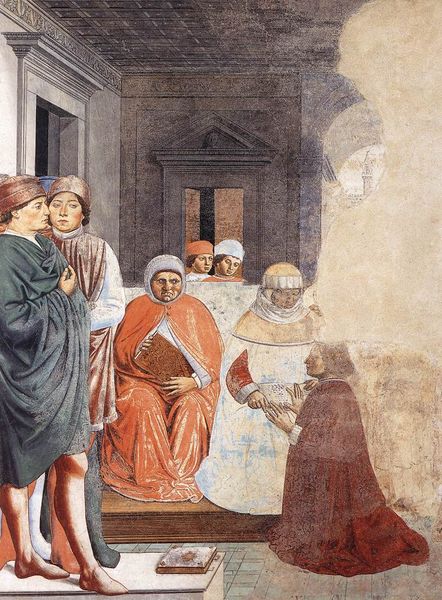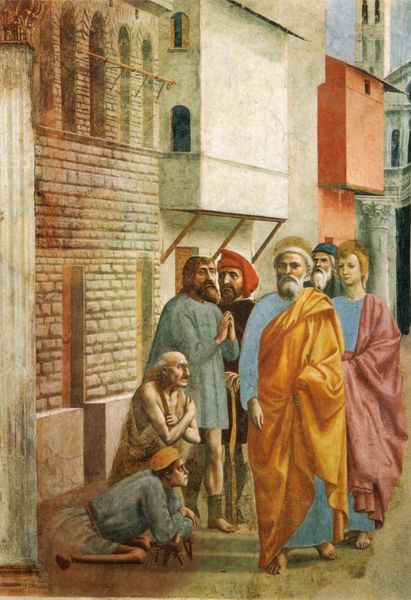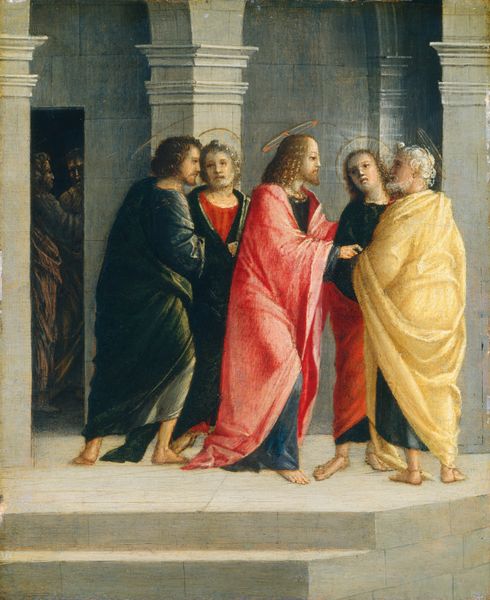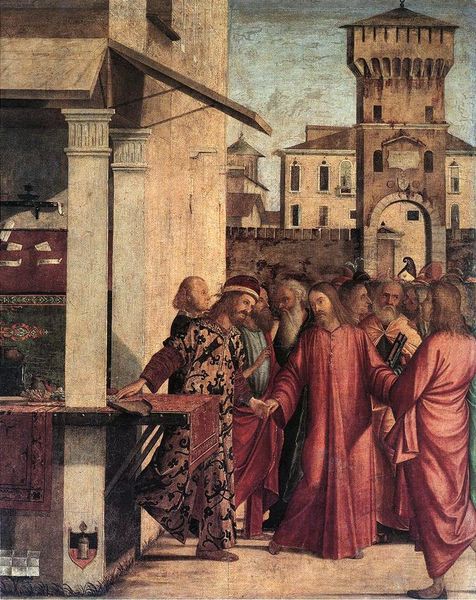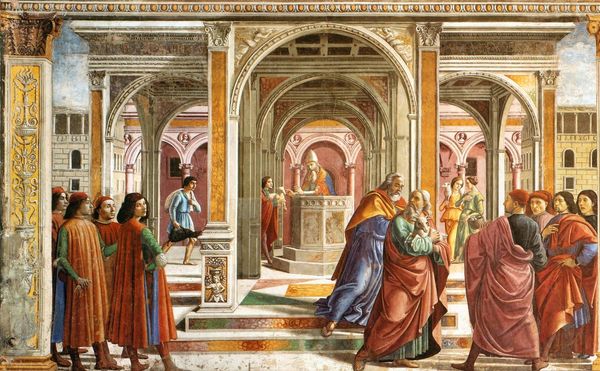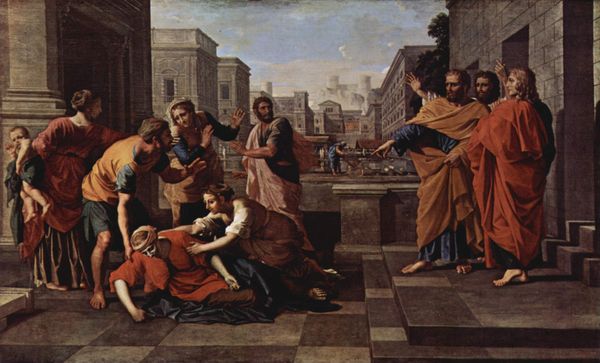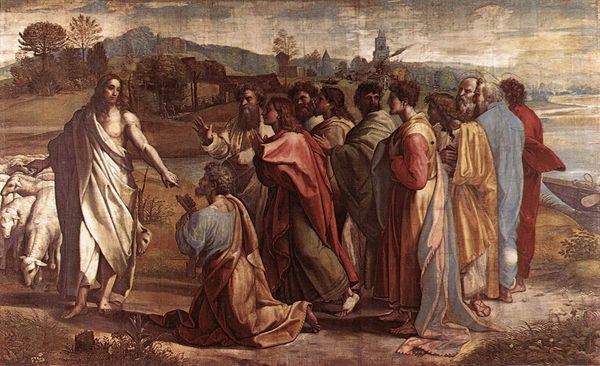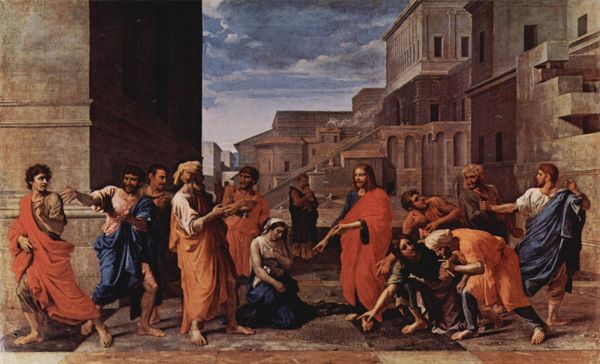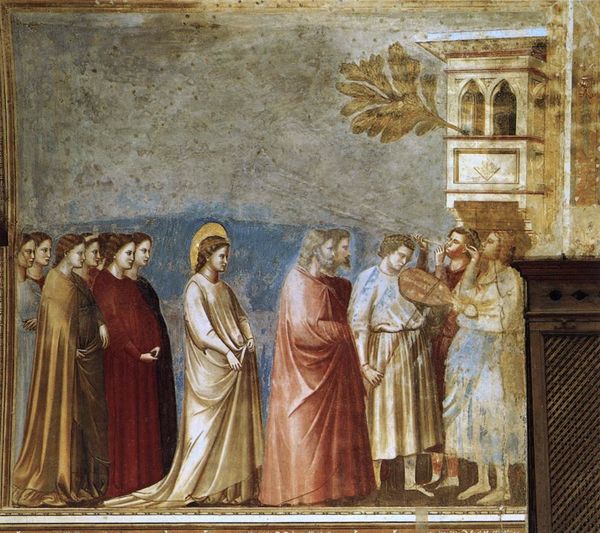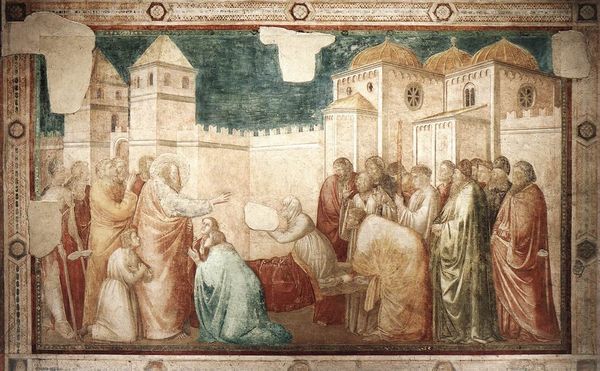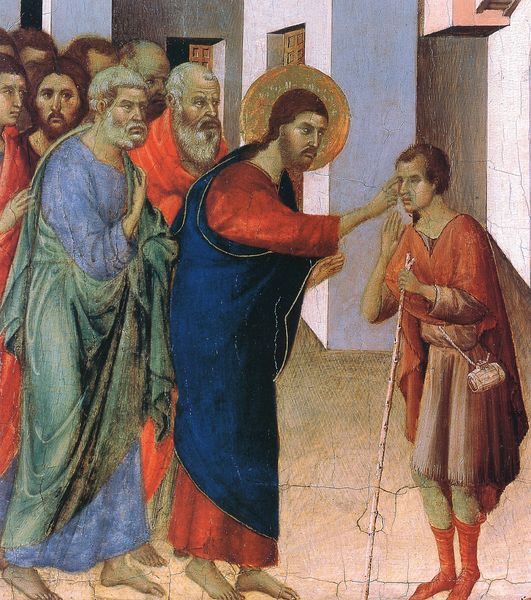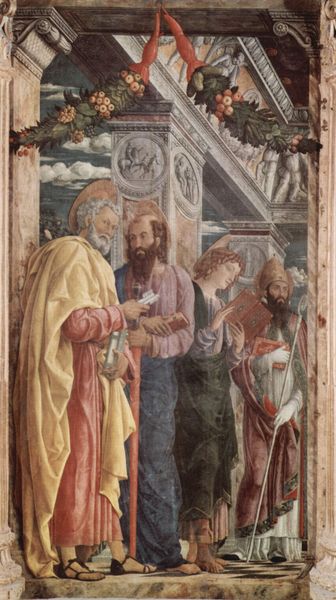
fresco
#
narrative-art
#
perspective
#
figuration
#
fresco
#
oil painting
#
christianity
#
history-painting
#
italian-renaissance
#
early-renaissance
#
christ
Copyright: Public domain
Editor: Here we have Masaccio's fresco, "Distribution of Alms and Death of Ananias," from 1425. The dramatic fall of Ananias really stands out. What do you see in this piece that maybe isn’t so obvious at first glance? Curator: I’m drawn to the materiality of the fresco itself. Consider the labor involved in preparing the wall, mixing the pigments, and applying them quickly before the plaster dried. This wasn't just art; it was skilled labor embedded in a very specific socio-economic context. Look at the pigments themselves; where did they come from? How were they processed? Editor: That’s a good point. We often focus on the narrative but overlook the actual making of the art. So, the origin and processing of materials tells us about that time period? Curator: Exactly. The ultramarine, for instance, would have been incredibly expensive, likely reserved for the most important figures or elements. Its presence indicates the patron's wealth and priorities. And think about the assistants involved – the division of labor within Masaccio's workshop. Who ground the pigments? Who prepared the plaster? Editor: So by looking at these things we move away from simply seeing the art as divinely inspired and understand the labour and socio-economic context? Curator: Precisely. Furthermore, think about how this fresco, designed to impart a moral message about communal sharing of wealth and resources to others, contrasts sharply with the reality of production. Did those involved share equitably in the gains of completing the fresco, or were these ideas reserved for patrons? What might have been lost with Ananias and his lack of generosity is instead amplified when considering production, labor, and profit. Editor: That shifts my whole perspective. I’ll never look at a Renaissance fresco the same way again. It's about materials, labor, and economy as much as about the bible stories depicted. Curator: Yes! Considering the artmaking as a form of early-industrial production reframes our understanding of value and meaning.
Comments
No comments
Be the first to comment and join the conversation on the ultimate creative platform.
